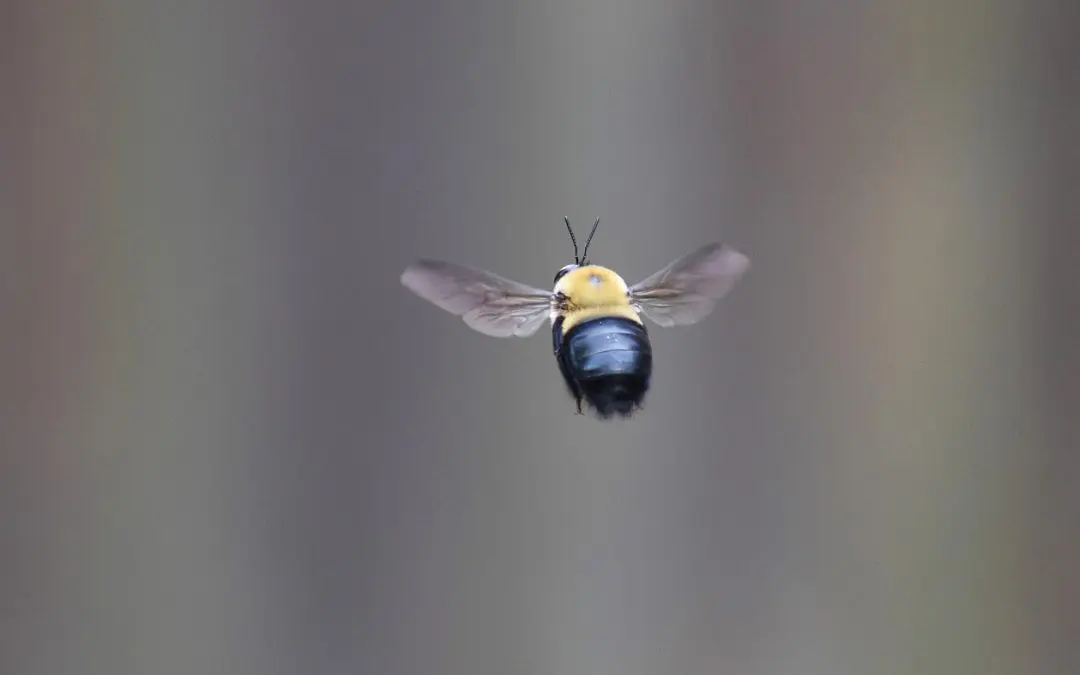Carpenter bees can be a real pain once they decide your home is their new hangout. They’re not aggressive like wasps but still cause problems—mainly the holes they drill into wood to lay their eggs. Left alone, they’ll come back every spring and do more damage. The good news is, you can remove carpenter bees and keep them away with the right approach. Here’s how to take care of the problem without turning it into a science project.
Know What You’re Dealing With
Carpenter bees look like bumblebees, but they behave very differently. Instead of building hives, they tunnel into wood, like fascia boards, railings, decks, or siding. The female does the drilling while the male hovers nearby, pretending he’s a threat. Spoiler: he can’t sting.
The holes they make are about the size of your pinky and perfectly round. They usually angle inward a bit before running along the grain of the wood. If you see wood shavings or yellowish staining around those holes, you’re probably looking at carpenter bee activity.
Act Fast to Remove Carpenter Bees Before the Damage Adds Up
Carpenter bees don’t eat wood like termites, but do weaken it over time. They can tunnel deep, and once they lay eggs, the larvae attract woodpeckers, which can do even more damage trying to dig them out. The sooner you deal with them, the better.
The key is to make the area uninviting so the bees won’t return. Wait until nightfall when the bees are in their tunnels, then gently insert a citrus oil spray—made by boiling citrus peels in water—into each hole. Carpenter bees dislike citrus and will often abandon the tunnel.
Seal the Deal
Once you’ve treated the holes, give it a few days, then seal them with wood filler or dowels and paint over the area to deter future nesting. If the damage is more than surface-level, go ahead and replace the board.
Painting or staining the wood helps discourage bees from coming back. They prefer untreated or weathered wood. A couple of coats of exterior paint or sealer can go a long way toward making your house less attractive to carpenter bees.
Don’t Forget to Prevent Future Infestations
Once you’ve handled the active bees, prevention becomes the name of the game. Since carpenter bees tend to return to the same spot every year, it’s smart to give them a reason not to. Painted and sealed wood is a good start, but there are a few other tricks you can use.
Hanging decoy carpenter bee nests around your home can help deter new bees from settling in, since they prefer not to nest near others. These decoys mimic the appearance of real nests and take advantage of the bees’ natural territorial behavior.
If the infestation is large or you’re dealing with hard-to-reach areas like eaves or roof trim, it might be worth calling in a professional. Some pest control companies specialize in dealing with wood-boring insects and can treat the area more thoroughly.
Keep an Eye Out
Carpenter bees tend to show up in early spring, so that’s the best time to watch for signs of activity. Check wood surfaces for new holes, fresh sawdust, or buzzing bees hovering in one spot. If you stay on top of it year after year, it gets easier to manage.
It’s one of those problems that doesn’t go away on its own. But with the right approach, you can stop carpenter bees from turning your house into their nesting ground.
FAQs on How to Remove Carpenter Bees
Do carpenter bees sting?
Male carpenter bees don’t sting at all. Female carpenter bees can sting, but usually don’t unless provoked or handled directly.
What kind of wood do they go after?
They prefer softwoods like pine, cedar, or redwood, especially if they’re untreated or weathered. Painted or sealed wood is less appealing to them.
Can carpenter bees damage my home?
Over time, yes. While they don’t eat wood like termites, their tunnels can weaken wood structures, and repeated nesting in the same area can lead to costly repairs.
Are bee traps effective?
They can be, especially when combined with other prevention methods. Traps alone usually won’t eliminate a large infestation but can help cut down on future nesting.
When should I treat for carpenter bees?
Early spring is the best time, right when they start becoming active. But if you spot them later in the season, it’s still worth treating the tunnels to break the cycle.
M&S Home Inspections offers home inspections in Eastern North Carolina. Contact us to schedule our services today.

